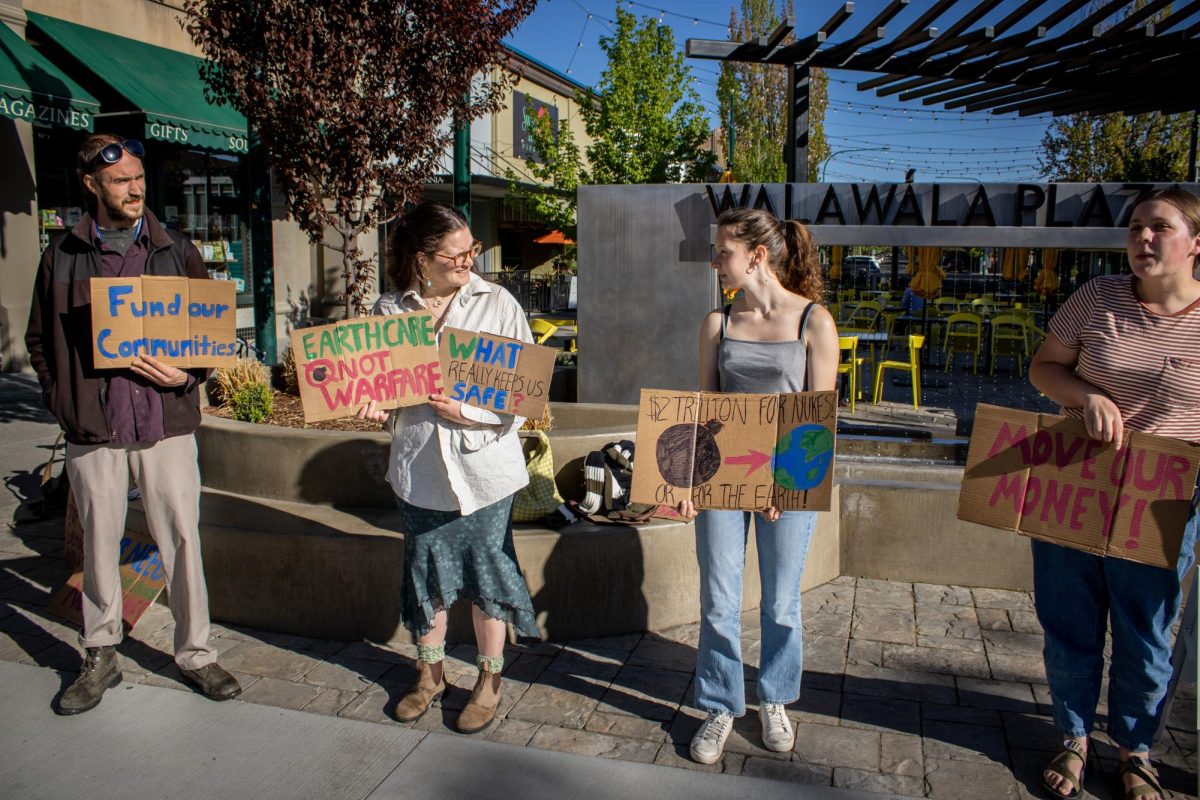After a series of protests by students over alumni weekend, three top administrators from the college spoke exclusively with The Pioneer about their reactions to the calls by students, faculty and alumni for the college to increase socioeconomic diversity and change its approach to financial aid.
President George Bridges, Dean of Admissions & Financial Aid Tony Cabasco and Communications Director Michelle Ma unanimously expressed support for student activism and engagement with issues on campus. The college plans to implement the three goals listed in pamphlets distributed by First Generation/Working Class students to alumni on campus. These goals included a transition program to help FGWC students adjust to college, the institutionalization of an FGWC Mentorship Program and more accessibility and visibility for existing resources already available at Whitman.
Bridges initially announced the plans to alumni at the Reunion Convocation on Saturday.
“We intend to pursue and implement [the FGWC’s] goals next year. They’re ambitious, and yet they are achievable,” said Bridges.
While the administrators acknowledge that Whitman does have a problem with diversity, they believe that they are not unique around the country.
“Every school has a challenge [with socioeconomic diversity]. Is it a problem? Yes, it’s a problem nationally,” said Bridges. “Is it a problem locally? We can always do more. The question is, what can we afford to do more? How much can we afford to do more without compromising other critical pieces of the college and its quality?”
Bridges emphasized that $50 million dollars have been raised for the endowment to increase scholarships over the past ten years as part of his Now is the Time fundraising campaign.
“The fact that we raised close to fifty million dollars in scholarship support for students endowed seems to be lost on the minds of some students, and I worry they don’t have access to enough information about what we’re doing on this issue. I’m not faulting them, I’m just saying we, the administration, could do a better job relaying that information to them,” said Bridges.
Bridges is starting a blog, where he plans to provide information and data relating to the concerns of the community. Students are encouraged to send questions and suggest topics.
Some protests this weekend questioned whether the statistics about racial and ethnic diversity published by the college are true, based on what students see on campus.
“We report what students report to us … the data is the data,” said Cabasco.
According to the data, the incoming class of 2018 is the second-most diverse in Whitman history. Twenty-two percent identify as students of color, and five percent as international students. A recent blog post criticizing Whitman’s admissions and financial aid policies incorrectly stated that only five members of the first year class are black, possibly due to a failure to take into account students who identify as two or more ethnicities.
Forms of student activism pushing for greater socioeconomic diversity over alumni weekend included an art installation on the steps of Memorial Hall, a walk-out by the first-year class from Encounters, the distribution of pamphlets to alumni and guerilla theater during the alumni luncheons.
“All forms of activism, as long as they’re done respectfully, in my mind are good,” said Bridges. “We want students to express themselves.”





